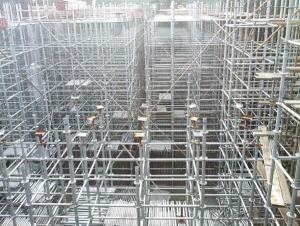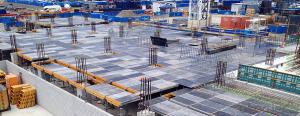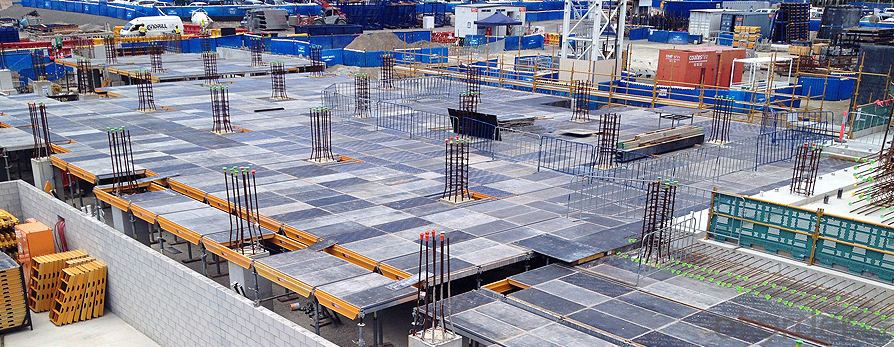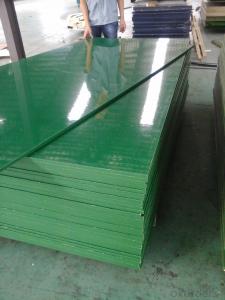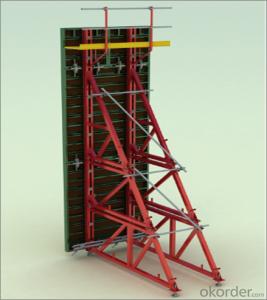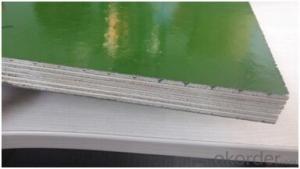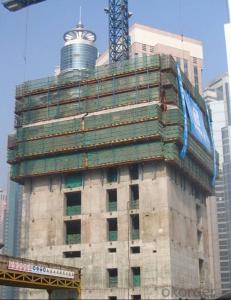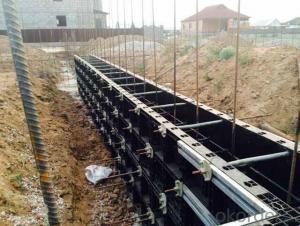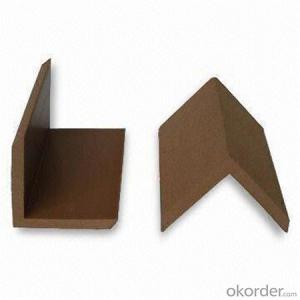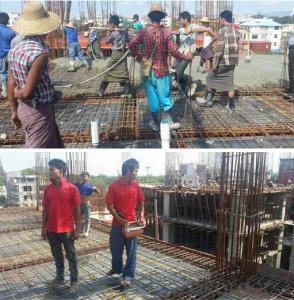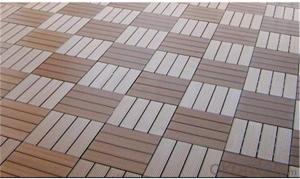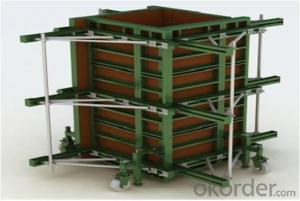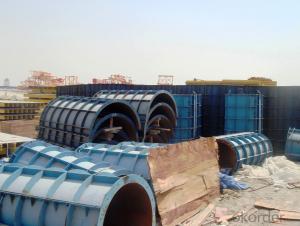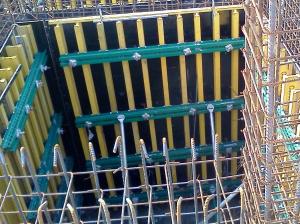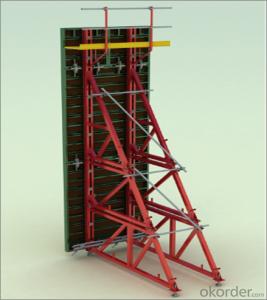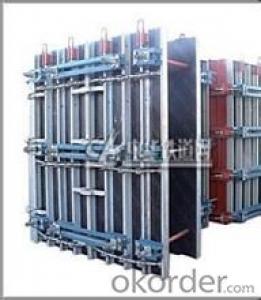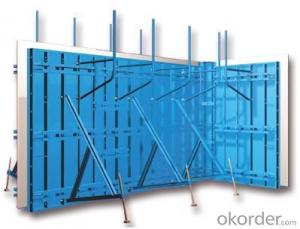The Advantaged Plastic Formworks in CNBM
- Loading Port:
- Tianjin
- Payment Terms:
- TT OR LC
- Min Order Qty:
- 1000 set
- Supply Capability:
- 50000 set/month
OKorder Service Pledge
OKorder Financial Service
You Might Also Like
Specification
Plastic Formwork Concrete Formwork Parts Of A Tubular Scaffolding Low Price
Developing with new technology materials, steel formworks is no longer a must in construction concrete process. More and more buildings are established with plastic formworks. And workers love this new formworks much more.
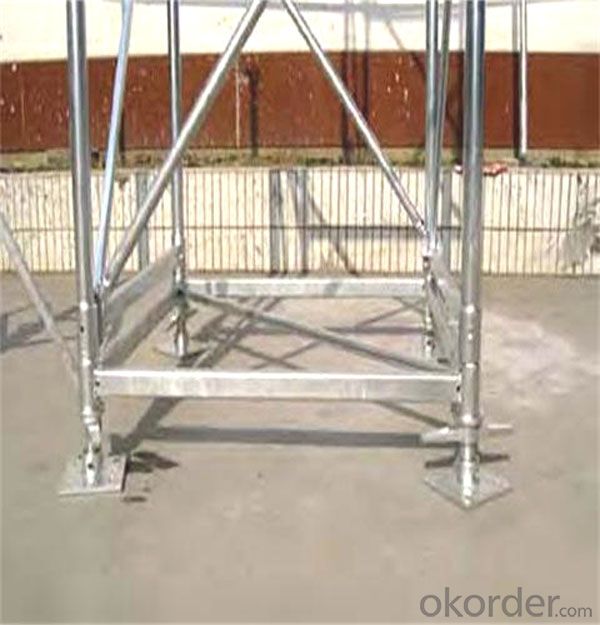
The advantages of plastic formworks:
1.First of all--light
Yes it is the first advantage of plastic formwork. It wins the great praise of both contractors and workers.
The biggest panel is 120×1500px,weights 10.5kg only. It can be lift and set up by one person easily, which means there is no need for cranes on site.Saves a lot of cost and time.
2.Easy set up
Different size of panels can firmly locked by simply turn the special handles to 90 degree. The Panels has rib on the back, which makes the system need not traditional wood blocks and nails. The panels have holes to fit tie rod, guarantee the strength of the whole system.
3.Modularity
Modular formworks composed by different size of panels,the main item is 120×1500px panel,which is used for the large area of walls and slabs. There are also small size of panels of multiply by 125px. The material of modular formwork is PC-ABS mixed with special glass fibers which enable panels to hold high pressures.
4.Strength
The handles are made by high strength Nilon, each panel locked by at least 4 handles, which makes the whole system strong enough to pour 1000px walls.
FAQ
We have organized several common questions for our clients, may help you sincerely:
1)How is the Packaging Details?
In bags or as the requirement ofcustomers.
2)How long can we receive the product after purchase?
Lead time is about 30days after getting the signed PI and deposit.
- Q: Can steel frame formwork be used for power plant structures?
- Certainly, power plant structures can utilize steel frame formwork. This construction method, which is both versatile and durable, proves suitable for various types of structures, including power plants. The robustness and rigidity of steel make it well-suited for withstanding the substantial loads and high temperatures typically associated with power plant structures. There are numerous advantages to employing steel frame formwork in power plant construction. Firstly, it guarantees exceptional structural integrity, ensuring the stability and safety of the power plant. Steel, being a robust material, can handle the weight and stress exerted by large power generation equipment and structures. Furthermore, steel frame formwork allows for design and construction flexibility. It can be easily tailored to accommodate the specific requirements of power plant structures, such as the necessity for spacious interiors, lofty ceilings, and intricate layouts. If there arises a need for future expansion or upgrades in the power plant, steel can be readily modified or expanded. Moreover, steel frame formwork enables faster construction times in comparison to traditional methods. The prefabricated nature of steel components facilitates swift and efficient assembly, thereby reducing construction time and costs. This holds particular significance in power plant projects, where timely completion is crucial to meet energy demands. In conclusion, due to its strength, durability, flexibility, and efficiency, steel frame formwork is undoubtedly suitable for power plant structures. It provides a reliable construction method for power plants, ensuring the safety, functionality, and longevity of these crucial infrastructure projects.
- Q: Can steel frame formwork be used for both horizontal and vertical concrete structures simultaneously?
- Yes, steel frame formwork can be used for both horizontal and vertical concrete structures simultaneously. Steel frame formwork is a versatile type of formwork system that is commonly used in construction projects. It consists of steel frames, typically made of steel tubes or channels, which are assembled to create the desired shape and dimensions of the concrete structure. The steel frames can be easily adjusted and secured in place, allowing for flexibility in creating both horizontal and vertical concrete structures. The formwork can be used to construct slabs, beams, walls, columns, and other structural elements. Steel frame formwork offers several advantages for simultaneous use in horizontal and vertical concrete structures. Firstly, it provides a strong and durable support system that can withstand the weight and pressure of the concrete. This ensures that the formwork remains stable and intact throughout the pouring and curing process. Secondly, steel frame formwork is reusable, which makes it a cost-effective solution for construction projects. Once a concrete structure is completed, the formwork can be disassembled and used again for other projects. This not only reduces construction costs but also minimizes waste and promotes sustainable construction practices. Additionally, steel frame formwork can be easily adjusted to accommodate changes in design or dimensions. This flexibility allows for efficient construction, as the formwork can be quickly modified to suit the specific requirements of the project. In conclusion, steel frame formwork is a suitable option for both horizontal and vertical concrete structures simultaneously. Its versatility, strength, reusability, and flexibility make it an efficient and cost-effective choice for construction projects.
- Q: Can steel frame formwork be used in projects with tight construction schedules?
- Yes, steel frame formwork can be used in projects with tight construction schedules. Steel frame formwork is known for its strength, durability, and ability to withstand high pressure and repetitive use. Its quick assembly and disassembly process allows for faster construction cycles, making it a suitable choice for projects with tight schedules. Additionally, the versatility of steel frame formwork allows it to be used in various types of construction projects, further contributing to its effectiveness in meeting tight deadlines.
- Q: Can steel frame formwork be used for retail and commercial buildings construction?
- Retail and commercial buildings construction can indeed incorporate the use of steel frame formwork. Various advantages of steel frame formwork render it suitable for such projects. Firstly, steel possesses remarkable strength and durability, enabling it to withstand heavy loads and make it an excellent option for the construction of expansive retail and commercial buildings. Secondly, the assembly and disassembly of steel frame formwork can be effortlessly executed, facilitating efficient construction procedures. This implies that the formwork can be promptly set up and adjusted to accommodate diverse building designs and requirements. Additionally, steel frame formwork offers exceptional versatility and can be utilized for a wide array of concrete structures, including walls, columns, beams, and slabs, which are commonly found in retail and commercial buildings. Moreover, steel frame formwork guarantees a smooth and superior finish for concrete surfaces. It ensures precise dimensions and alignment, leading to visually appealing structures. This aspect is particularly crucial for retail and commercial buildings, where appearance plays a vital role in attracting customers and establishing a positive business image. Furthermore, in the long run, steel frame formwork proves to be cost-effective. Although it may entail higher initial costs compared to alternative formwork materials, its durability and reusability significantly diminish expenses over time. Steel formwork can be employed for multiple projects, making it an economically viable choice for construction companies engaged in retail and commercial building projects. In conclusion, steel frame formwork serves as a suitable option for retail and commercial buildings construction. Its strength, versatility, efficiency, and cost-effectiveness render it an ideal formwork system for the creation of large, enduring, and visually appealing structures.
- Q: Can steel frame formwork be used for both horizontal and vertical applications?
- Yes, steel frame formwork can be used for both horizontal and vertical applications. Steel frame formwork is a versatile and robust system that can be easily adapted for various construction projects. It provides a strong structure that can withstand the pressure of concrete pouring, making it suitable for both horizontal slabs and vertical walls. Additionally, the steel frame formwork system allows for quick and efficient assembly and disassembly, making it a cost-effective choice for construction projects that require repetitive use of formwork. Overall, steel frame formwork is a reliable solution for both horizontal and vertical applications in the construction industry.
- Q: Steel frame wood fire doors can replace steel fire door
- Can not, I suggest you find a professional manufacturers, fire doors need to fire procedures, it is recommended to adopt
- Q: What are the safety precautions for dismantling steel frame formwork?
- When dismantling steel frame formwork, it is important to follow several safety precautions. Firstly, ensure that all workers involved in the dismantling process are wearing appropriate personal protective equipment (PPE) such as safety helmets, gloves, and safety glasses. Secondly, make sure the work area is properly secured and barricaded to prevent unauthorized access. Before starting the dismantling, inspect the formwork for any defects or damages that may pose a safety risk. Use appropriate tools and equipment to dismantle the formwork, ensuring that workers maintain proper body posture while lifting heavy components. Finally, dispose of the dismantled components properly and promptly to prevent any hazards or obstructions on the site.
- Q: What are the different types of formwork connections used with steel frame formwork?
- Steel frame formwork can be used with several different types of connections to securely join the formwork panels together during the concrete pouring process. Some commonly used connections include the following: 1. Wedge connections: Steel wedges are inserted into pre-drilled holes in the formwork panels and tightened to hold the panels securely. 2. Bolted connections: Bolts, nuts, and washers are used to join the formwork panels. Holes are drilled in the panels and bolts are inserted through them, with nuts and washers tightened to secure the panels. 3. Pin and wedges connections: Steel pins are inserted into holes in the formwork panels, and wedges are driven into slots on the pins to hold the panels together. 4. Clamping connections: Clamps or clamping devices are used to join the formwork panels. These clamps are tightened around the panels, applying pressure for a secure connection. 5. Magnetic connections: Magnets embedded within the formwork panels create a strong bond between them, eliminating the need for additional connectors. 6. Hook and loop connections: Straps with hook and loop fasteners are used to join the formwork panels. These straps are wrapped around the panels, providing a secure connection. The choice of formwork connection depends on factors such as project requirements, the formwork system being used, and the desired level of ease and speed of assembly. Each type of connection has its own advantages and disadvantages.
- Q: Can steel frame formwork be used in combination with other formwork systems?
- Yes, steel frame formwork can be used in combination with other formwork systems. Steel frame formwork is a versatile and flexible system that can be easily adapted to different construction requirements. It can be used in conjunction with other formwork systems such as timber formwork, aluminum formwork, or modular formwork to achieve specific construction objectives. The combination of different formwork systems allows for more efficient and cost-effective construction processes. For example, steel frame formwork can be used for the main structural elements while timber formwork can be used for smaller components or irregular shapes. This combination can help optimize material usage and reduce costs. Moreover, using different formwork systems in combination can enhance the overall speed and productivity of the construction project. Each formwork system has its own advantages and limitations, and by combining them, contractors can leverage the benefits of multiple systems to achieve the best results. It is important, however, to ensure compatibility and proper coordination between the different formwork systems. The design and planning phase should take into consideration the integration of the various systems to ensure a seamless and efficient construction process. Close collaboration between the different trades involved in the construction project is crucial to ensure the successful combination of formwork systems. In conclusion, steel frame formwork can indeed be used in combination with other formwork systems. This flexibility allows for the optimization of construction processes, cost savings, and improved productivity. Proper coordination and collaboration are key to successfully integrating different formwork systems into a construction project.
- Q: Can steel frame formwork be used for high-strength concrete?
- High-strength concrete can indeed be accommodated by steel frame formwork. Renowned for its durability and strength, steel frame formwork proves to be an apt choice for handling high-strength concrete. The rigid structure of the steel frame imparts stability and support, enabling the formwork to withstand the immense pressure exerted by the high-strength concrete. Moreover, the employment of steel frame formwork guarantees precise and accurate placement of the concrete, resulting in the fulfillment of the desired strength requirements. Nevertheless, it is imperative to carefully assess the design and specifications of the steel frame formwork to ascertain its compatibility with the specific needs of high-strength concrete. Adequate reinforcement and bracing might be essential to ensure that the formwork is capable of enduring the augmented loads associated with high-strength concrete.
Send your message to us
The Advantaged Plastic Formworks in CNBM
- Loading Port:
- Tianjin
- Payment Terms:
- TT OR LC
- Min Order Qty:
- 1000 set
- Supply Capability:
- 50000 set/month
OKorder Service Pledge
OKorder Financial Service
Similar products
Hot products
Hot Searches
